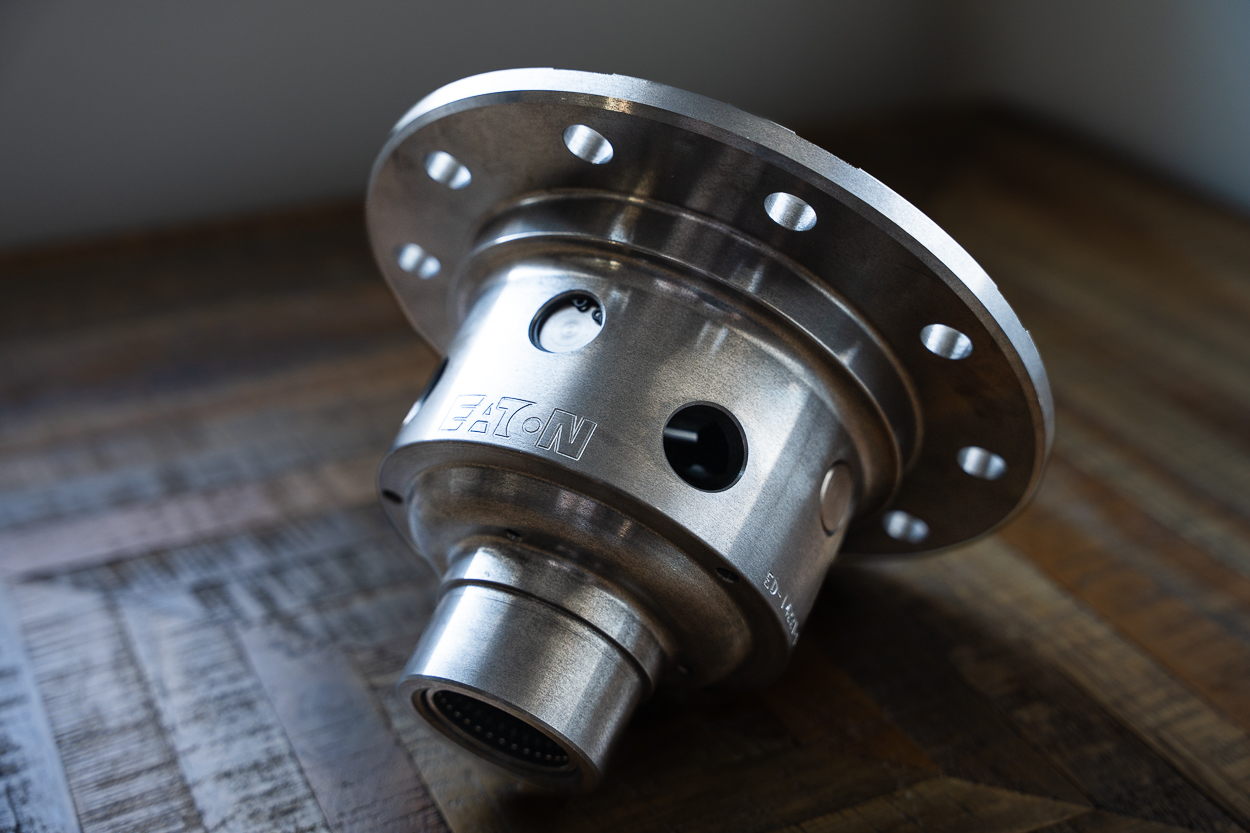
The 5th Gen Toyota 4Runner is a solid off-road platform, and if you’re lucky enough to have a Trail, TRD Off-Road, or TRD Pro trim, you already know the benefit of the factory rear locker when climbing steep, loose terrain or muscling through ruts. But as capable as the rear locker is, there comes a point where one just isn’t enough, especially when the front tires are in the air, spinning, or fighting for grip.
That’s where adding a front locker like the Eaton E-Locker completely transforms the experience. When the trail gets technical—think big rock ledges, deep cross-axle articulation, or snow-covered climbs—a front locker keeps the nose of the 4Runner tracking straight and pulling you forward, not floundering for traction.
Table Of Contents
Why An E-Locker Is Important
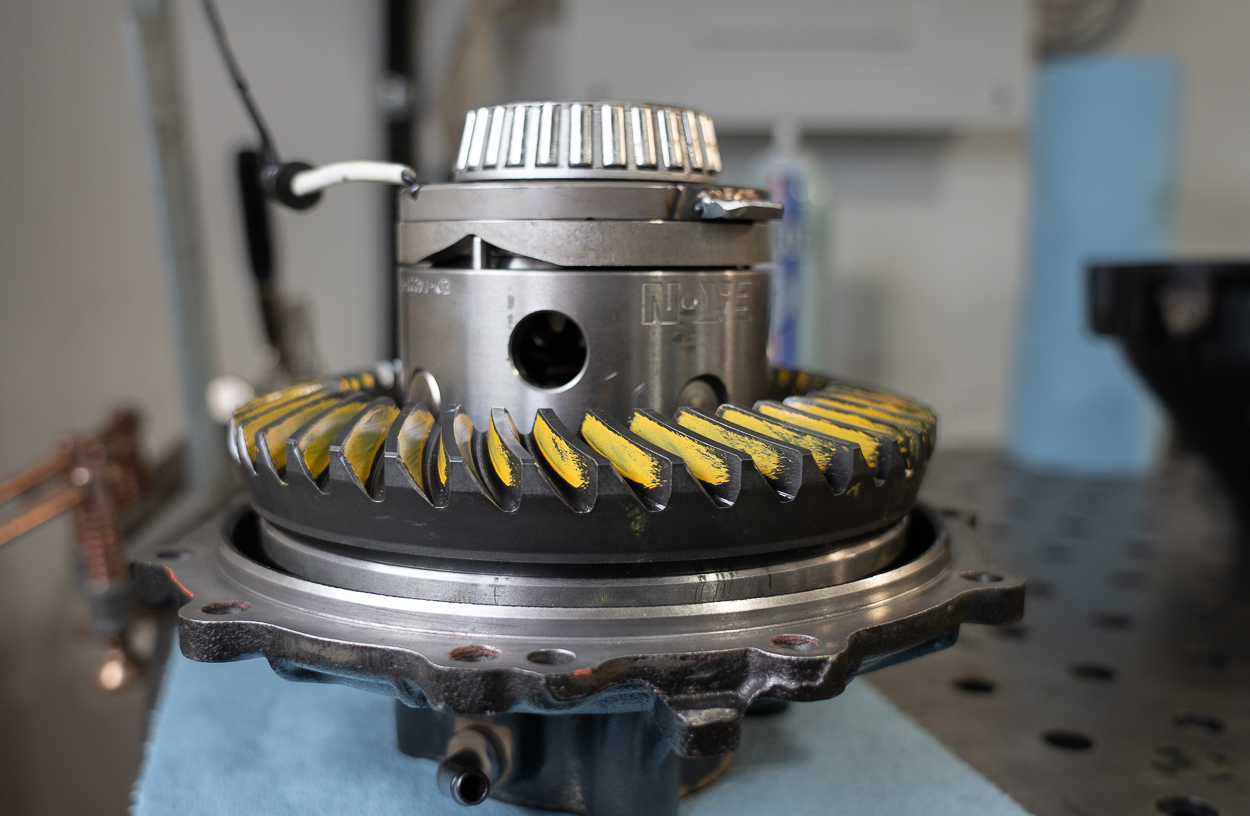
With open differentials, power typically gets sent to the wheel with the least resistance (i.e., the one off the ground), unless you have some sort of torque vectoring system. The Eaton locker replaces the open differentials in your 4Runner with an electronically actuated locking differential that provides 100% lockup of both axle shafts on demand. This means both front tires turn in unison, regardless of terrain or traction conditions. It’s engineered to fit Toyota’s common 8” front differential and 8.2″ rear differential housing.
Why Eaton? It’s a self-contained solution—there are no air lines, compressors, or solenoids to worry about. It works via a simple 12V switch you control from the cabin, making it engaging, intuitive, and fast without any complicated setup. In contrast to ARB or factory setups, it’s more DIY-friendly and less prone to failure points like leaky compressors or brittle air fittings.
Real-World Traction Benefits
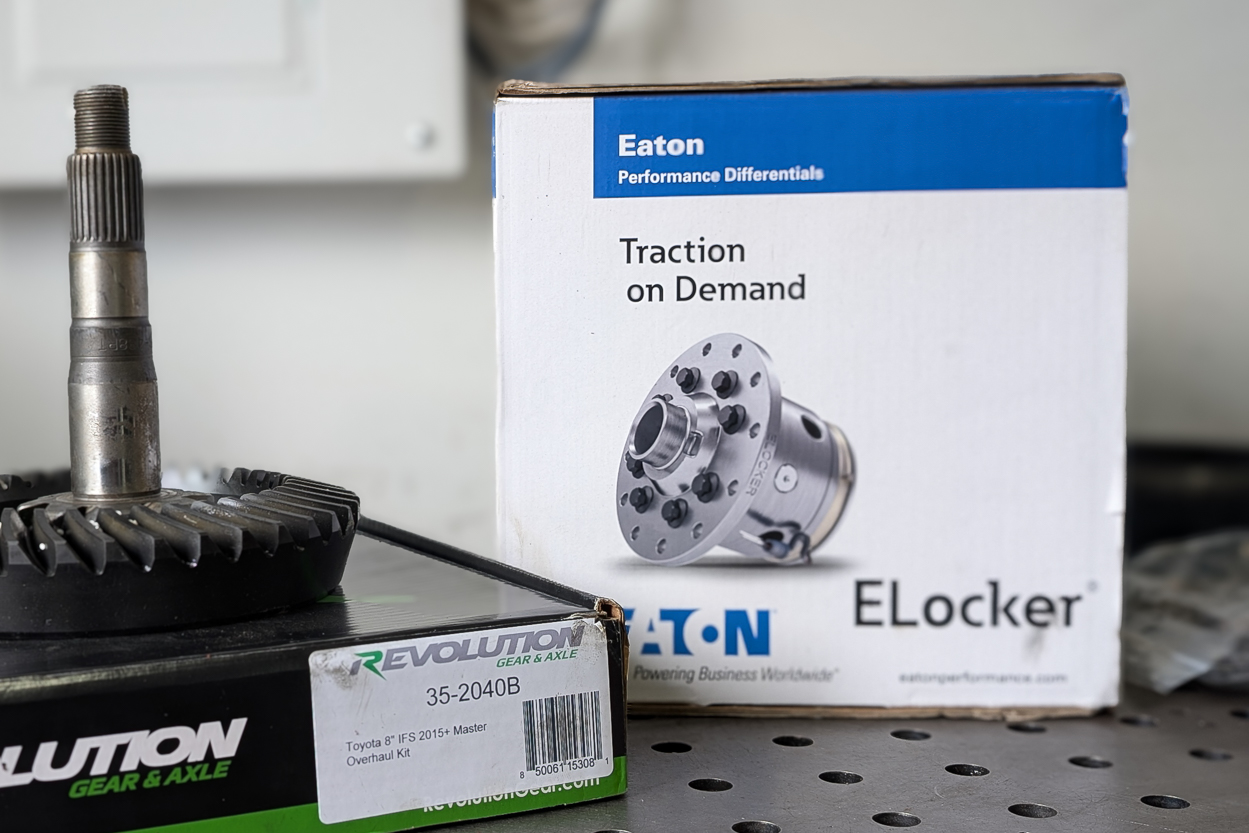
Running dual lockers—rear factory and front Eaton—takes the 4Runner from capable to “go-anywhere” confidence.
I noticed the most dramatic gains in…
- Rock crawling: The front locker keeps your steering tires pulling up and over obstacles, reducing the need for momentum or wheelspin.
- Snow and mud: In deep, inconsistent traction zones, a locked front end keeps the truck from nosediving or veering unpredictably.
- Technical climbs: Especially when weight shifts off one front tire, it keeps both sides engaged and pushing forward.
With an independent front suspension (IFS) SUV like the 4Runner (vs. a solid axle Jeep), front articulation is limited. That’s where the front locker becomes a secret weapon—it makes up for the lack of suspension travel by ensuring both tires work together, not independently. And because you control when it’s on or off, you’re never at the mercy of automatic systems. It’s on when you need it, off when you don’t.
Installation Insights (4Runner Front Axle)
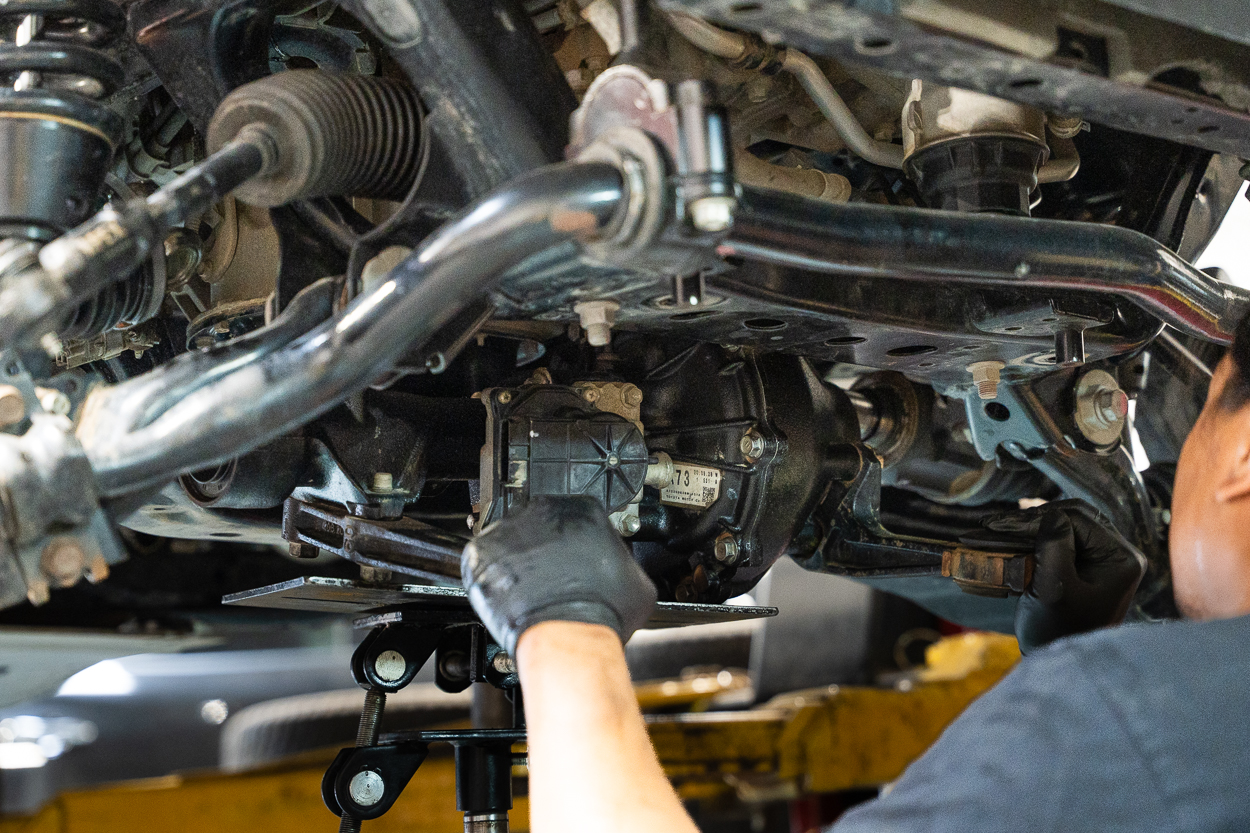
Installing a front locker on a 5th Gen 4Runner isn’t necessarily simple, but it’s absolutely doable—especially if you’re already tackling a regear or refreshing your front end drivetrain. I was adding a set of Revolution Gear & Axle 4.88s, so the timing was right to add the Eaton. Check out my Revolution 4.88 gear review for more.
Compatibility: Most TRD Off-Road and Pro models use the standard Toyota 8” IFS clamshell front differential with 30-spline inner axles. That’s the diff Eaton designed their locker for—but there’s a crucial detail to get right: the carrier break.
What’s A Carrier Break & Why Does It Matter?
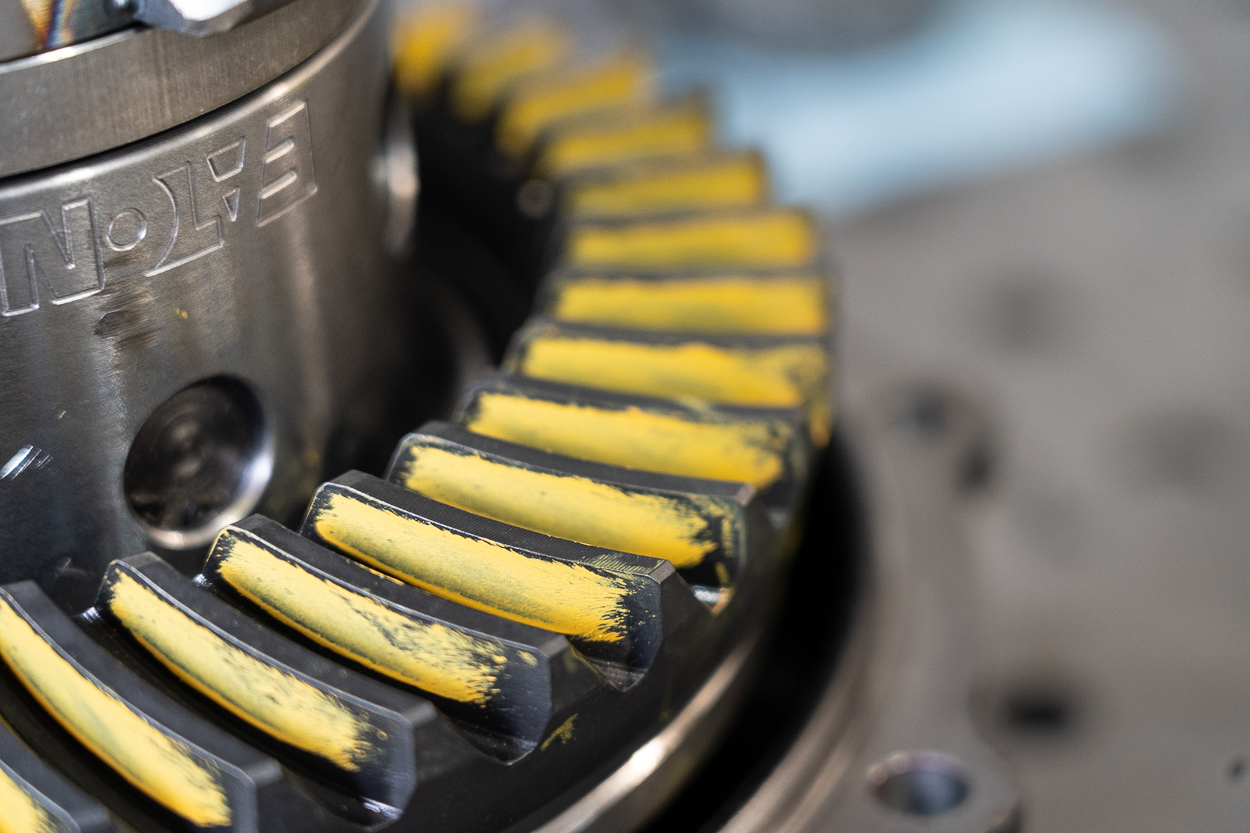
A carrier break refers to the point at which the ring gear thickness changes based on the gear ratio.
In Toyota’s 8” IFS front diff, there are two models, depending on your ratio.
- 3.73 and down (lower numerical ratios like 3.42, 3.73)
- 3.91 and up (higher numerical ratios like 3.91, 4.10, 4.56, 4.88, 5.29)
If your 4Runner came stock with 4.10s or you’ve regeared to 4.88, you’ll need the “3.91 and up” model. Choosing the wrong version leads to improper gear mesh, which can cause catastrophic damage and failure. Always confirm your existing or planned gear ratio before ordering.
Wiring: Eaton includes a clean, straightforward wiring harness with a switch, relay, and magnet actuator wire. Mounting the switch next to your factory rear locker button is a clean and functional option.
Install Tip: The front differential housing (clamshell) must be dropped from the crossmember. This is a time-consuming step that often involves disconnecting CV axles, sway bar links, and lower control arms. If you’re regearing or replacing axle seals anyway, it’s the perfect time to do the locker.
While a seasoned DIYer could handle this install with the right tools (bearing press, torque wrench, dial indicator, and patience), most will benefit from having a trusted drivetrain shop handle it—especially to ensure proper backlash, preload, and gear pattern during setup.
Off-Road Performance Improvements
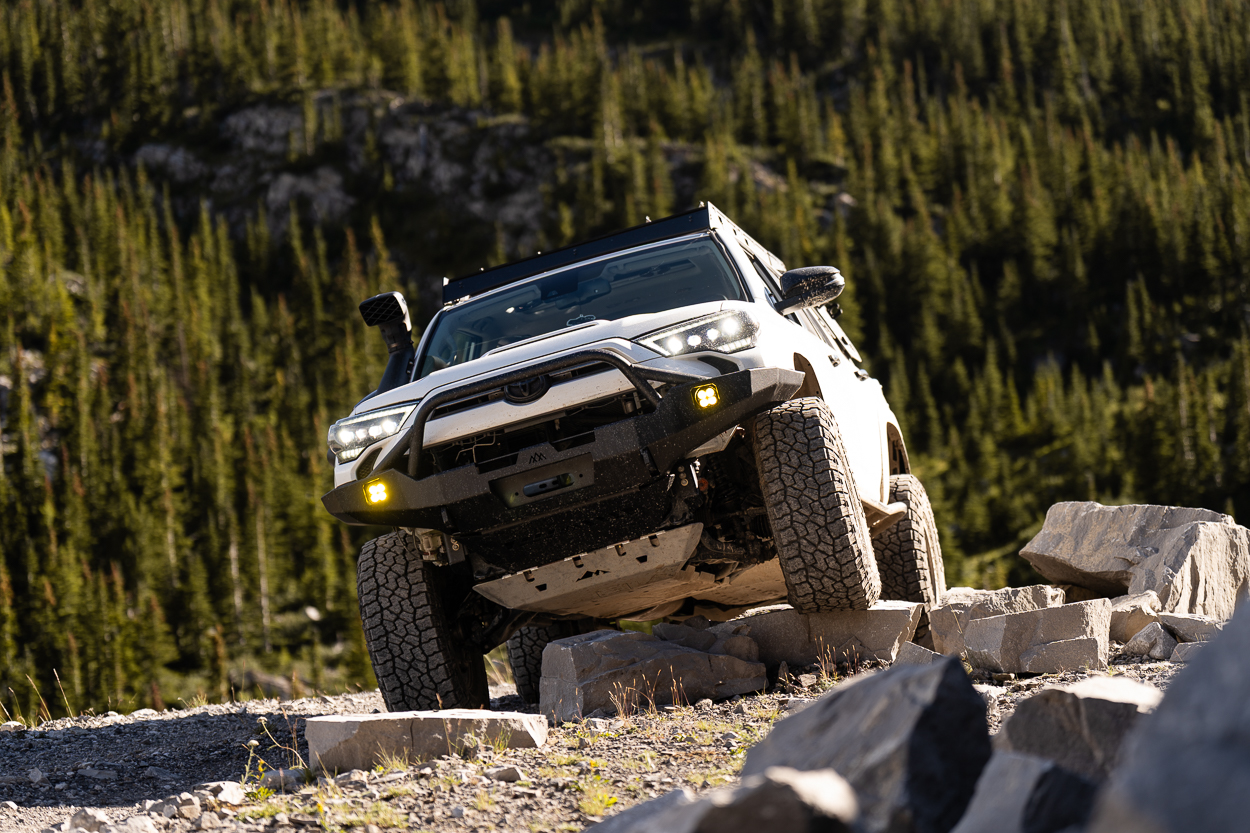
Engaging the front locker is instant and intuitive. In low-speed, high-traction situations like rock crawling or snow, the locker makes the front end feel planted and purposeful.
There is some steering resistance when turning with the front locker engaged—that’s to be expected from any solidly locked front diff. The resistance is manageable in loose terrain but noticeable on grippy surfaces. Just be sure to unlock the front before making tight maneuvers on rock or hardpack.
Noise and engagement? Nearly silent. A subtle click is all you’ll hear as it locks. In fact, many trail companions didn’t even realize it was engaged until they saw both front tires clawing evenly up a ledge.
Reliability & Maintenance
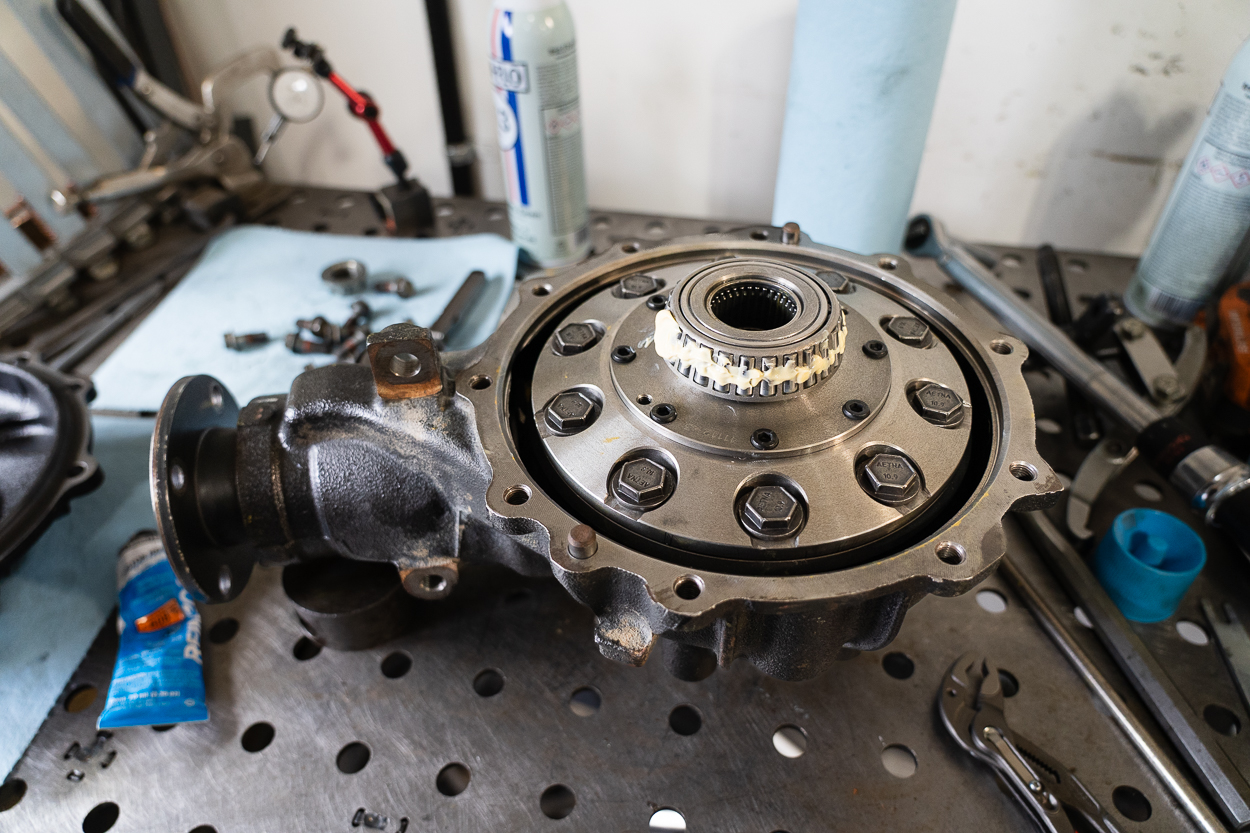
Eaton lockers have earned a reputation for rugged reliability. The magnet-based engagement system avoids the complexity of air-driven lockers, and there are fewer components to fail.
- Maintenance: Keep diff oil fresh (especially after water crossings), inspect the wiring during oil changes, and clean electrical connectors annually if you wheel in mud or snow.
- Durability: I have wheeled our local rock trails with this setup, and so far, no issues. I will be updating the review with long-term feedback after putting it through its paces.
- Support: Eaton backs the locker with a solid warranty and has responsive tech support for fitment or installation questions.
Pros & Cons
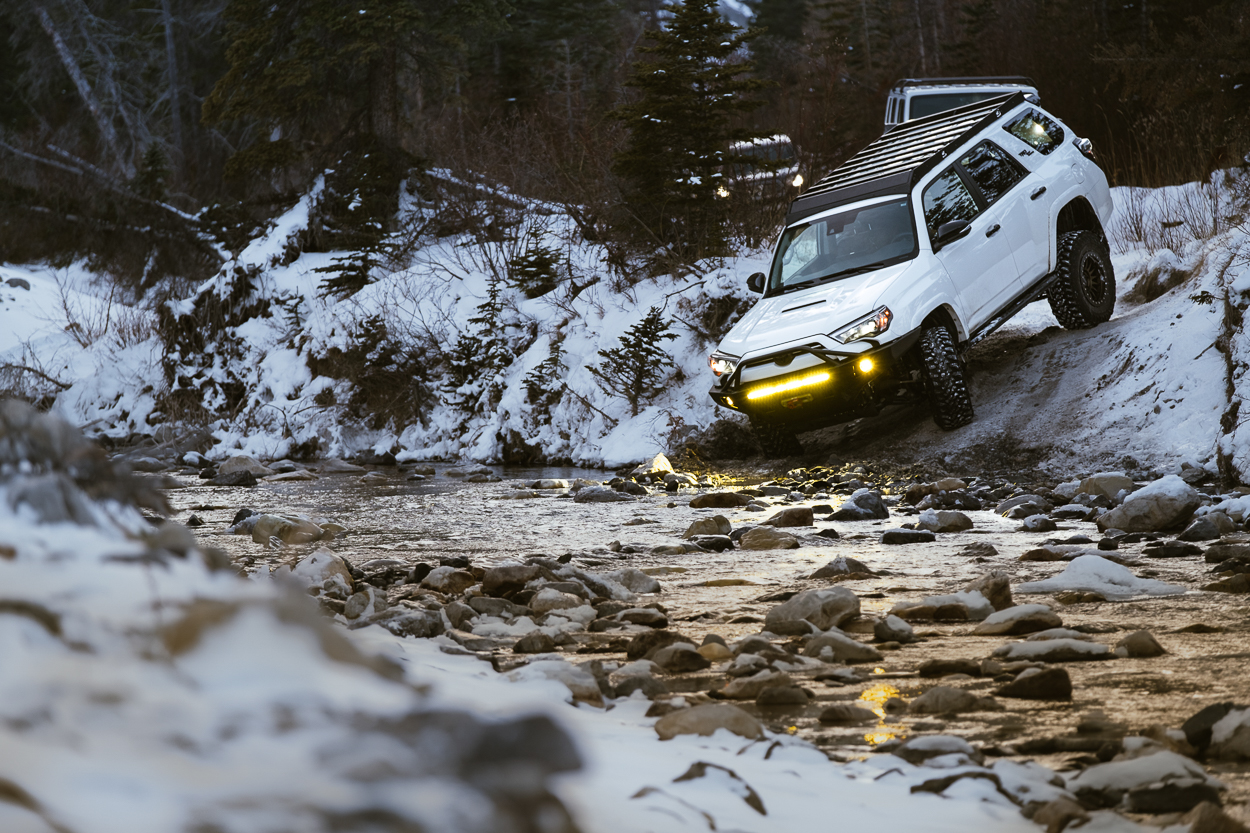
Like any serious modification, adding a front locker to your 4Runner comes with trade-offs. While the benefits in traction and control are substantial, it’s worth weighing those against the cost, installation effort, and occasional quirks that come with locking the front axle. Here’s a breakdown of what stood out—both good and bad.
Pros:
- Massive traction improvement for steep, uneven, or loose terrain
- Instant electronic engagement—no air compressor needed
- Seamless integration into factory-style dash switch panel
- Pairs perfectly with the rear factory locker for total confidence
Cons:
- Steering effort increases when locked, which is normal for any front locker
- The install is complex due to the clamshell diff removal
- Upfront cost (~$1500 + install), especially if not regearing
Is Eaton Right For You?
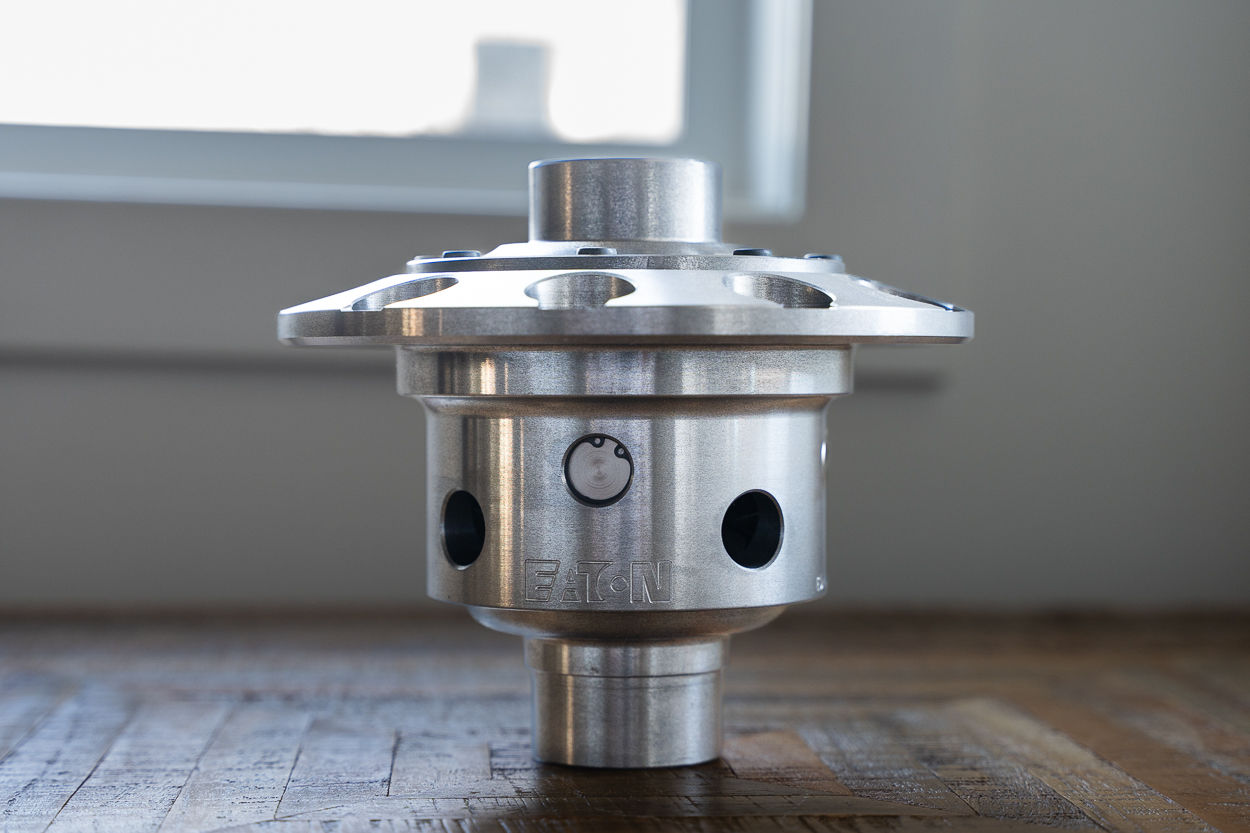
Adding a front locker isn’t a one-size-fits-all upgrade—it depends heavily on how you use your rig and what kind of terrain you face. For many 4Runner owners, the rear alone handles most trail scenarios. But if you’re starting to push your build harder or want added confidence in unpredictable conditions, a front locker might be the missing link in your traction setup. Here’s who will benefit most—and who might want to hold off.
The front locker is a game-changer if you’re:
- Regularly doing technical off-roading, rock crawling, or overlanding solo
- Running bigger tires (33s or 35s) and want better crawl control
- Regearing or replacing the front diff anyway—lock it while you’re in there
It may not be necessary if:
- You stick to mild fire roads or light trail runs
- You already rely heavily on A-TRAC and rarely need both axles locked
- Budget is tight, and the rear locker covers most of your needs
Final Thoughts
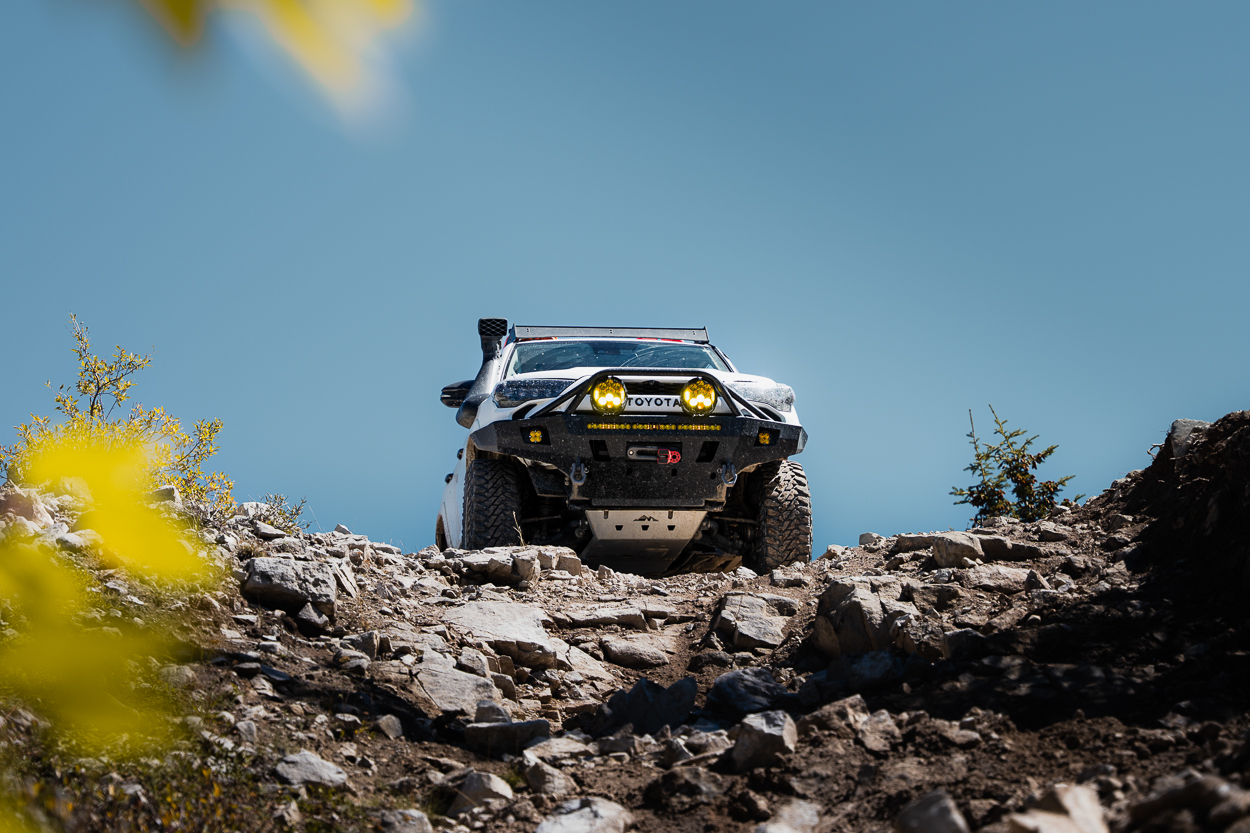
Adding the Eaton E-Locker to the front of a factory rear-locked 4Runner truly completes the traction package. It’s intuitive to use, delivers dependable performance, and transforms the 4Runner’s capability in technical terrain where a single locker might fall short.
Whether you’re crawling ledges in Moab, navigating snowy forest roads in the Rockies, or simply building a go-anywhere overland rig, a front locker ensures your 4Runner pulls itself forward with purpose—not just relying on rear traction and steering inputs. For those who regularly explore challenging trails or wheel solo, this is a confidence-inspiring upgrade.
Final verdict: 9.5 out of 10. It’s a highly recommended addition for serious 4Runner enthusiasts ready to take their off-road setup to the next level.

I have a question about the carrier break